Winter stars are jewels in the crown of the winter astronomy season, and a great reason to get outside and looking up even as the nights get longer and colder.
There are so many wonderful winter constellations and deep-sky targets to observe from November and into February, but don't forget the individual stars and star clusters that really shine at this time of year.
If you're planning a spot of winter stargazing, it pays to know which stars to look out for, and their constellations, to make exploring the night sky a fun activity.
Here we'll go through some of the best winter stars, where to find them and a bit of science to ponder as you gaze upwards.

Directions for how to find each star are given for January, the height of winter, but you can also use our star-hops described within each guide to locate them throughout the darker months.
For more advice, discover our best targets to observe in Orion, Patrick Moore's top 10 winter astronomy sights and take a tour of the midwinter Milky Way.
7 winter stars
Betelgeuse
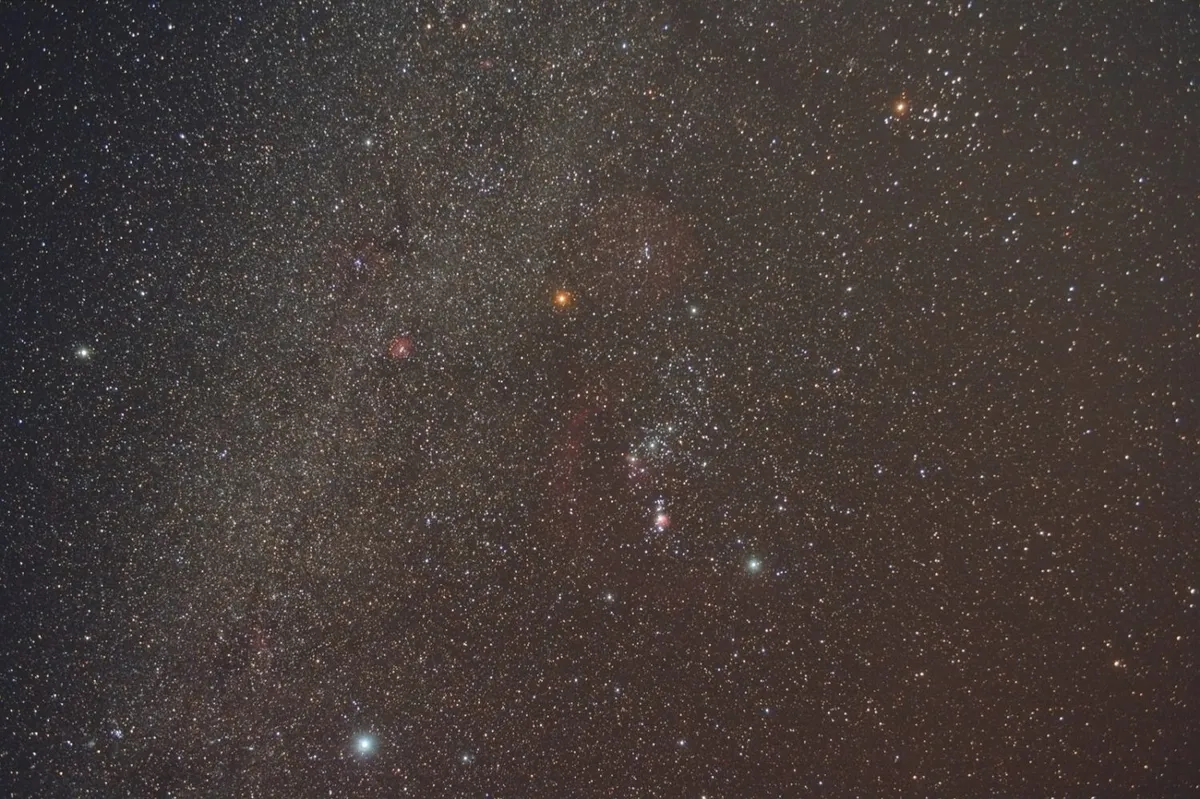
Of all the stars in the winter sky, Betelgeuse (Alpha Orionis) is arguably the one that prompts the most excitement and intrigue.
In January you’ll find Betelgeuse high in the south at around 23:00 UT. It’s easily visible on the left shoulder of the Orion constellation as you look at it with the naked eye.
Key to finding it is identifying Orion itself, which is probably best achieved by locating the unmistakable trio of stars known as Orion’s Belt.
Betelgeuse is just under 10º to the north-northeast of any of them.

To the eye Betelgeuse looks like a sparkling, orange-hued point of light, but decades of scientific study – some conducted using the most powerful astronomical facilities in existence today – have shown that a thrilling story is unfolding far away.
Betelgeuse is a red supergiant with a radius in optical light of about 4.5 astronomical units – in other words, almost the size of the orbit of Jupiter.
Betelgeuse hasn’t always been this bloated, ruddy leviathan however. It was once a hot O-type star, like Mintaka in Orion’s Belt is.
It would have had a blueish-white colour and would have also been more massive than it is now – perhaps around 20 times the mass of the Sun.
Such massive stars have much hotter cores than the Sun with faster nuclear fusion, using up most of their hydrogen [in] a few million years.
Rigel
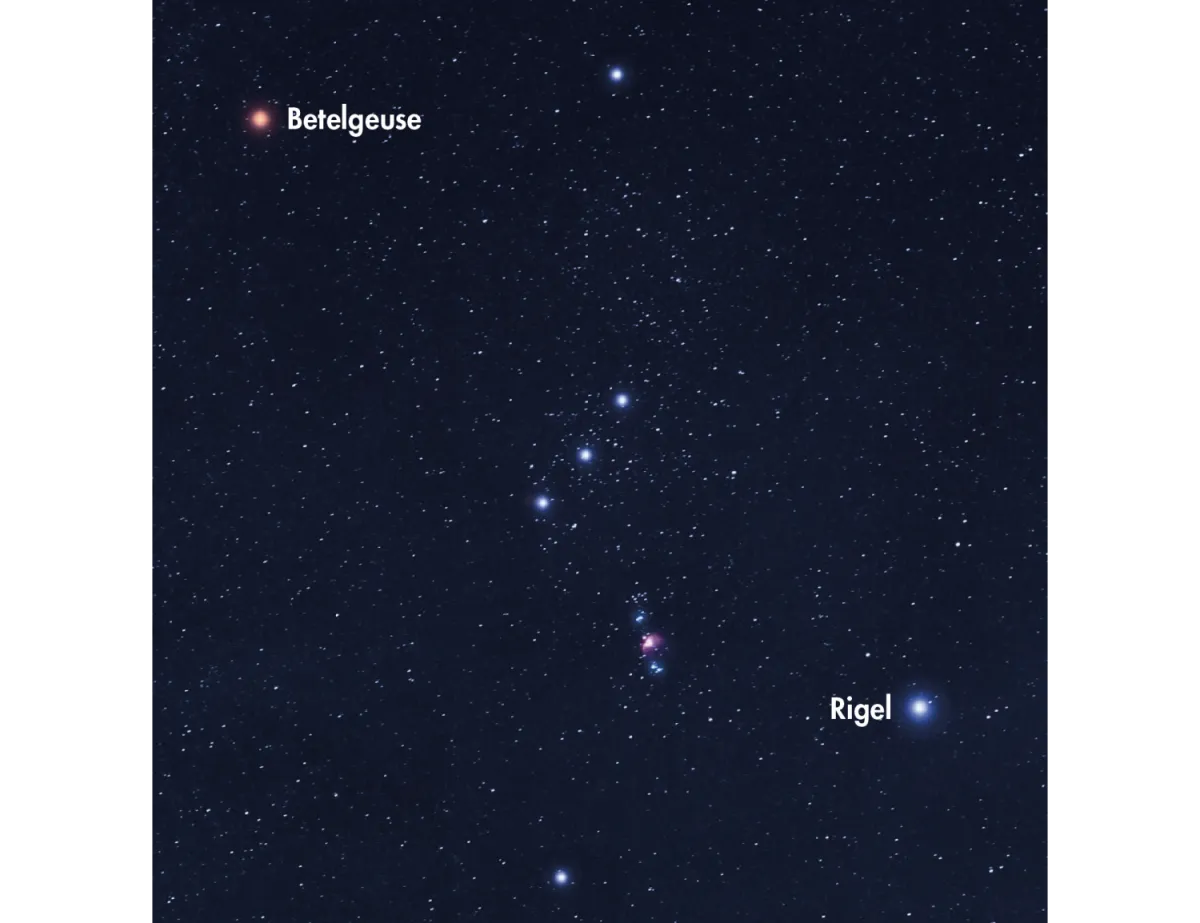
Rigel is one of the few stars in the winter sky that is so bright that it can be seen easily under the light pollution of city centres and suburban areas.
From a dark-sky site, Rigel is a blazing point of light at the right foot of Orion. In the first week of January it sits close to due south at around 22:20 UT.
Like its bright companion Betelgeuse, the brilliant star Rigel (Beta Orionis) is a supergiant, nearly 80 times the size of our Sun.
But even to the naked eye there’s one striking difference between these two stellar behemoths: their colours. Betelgeuse is orange-white while Rigel sparkles with a blue tint.
Why the difference? It all comes down to their temperatures. Some stars are red and some stars are blue.
The hotter a star is, the bluer it tends to shine, while cooler stars glow more red.
And indeed Betelgeuse’s surface temperature is about 3,300°C while Rigel’s is roughly 11,800°C.
W Orionis
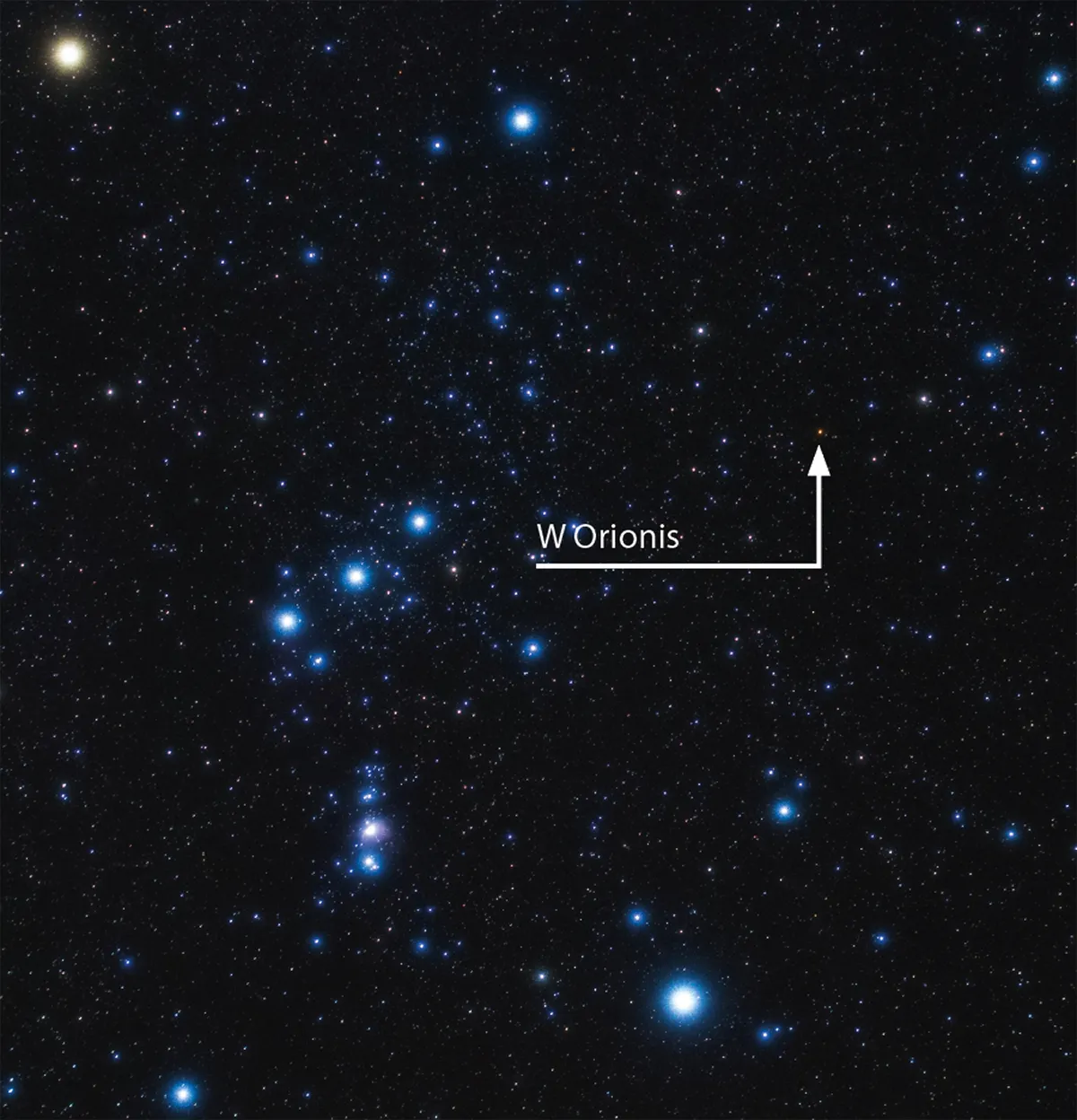
Although it’s on the cusp of naked-eye visibility, it’s easier to hunt down mag. +6.1 W Orionis with binoculars.
One way of finding it is to imagine a rough equilateral triangle tilted on its side, the base of which is marked by Mintaka and Bellatrix (Delta and Gamma Orionis). W Orionis is at the apex.
Less famous than winter stars like Betelgeuse or Rigel, the scientific story behind W Orionis is no less intriguing.
It has an atmosphere that swirls with large amounts of carbon.
For a star to become carbon rich, something called the dredge-up needs to happen several times so that carbon from the inner parts of the star gets to the surface and [is] released to its atmosphere.
This churning has occurred within W Orionis as it has aged.
The carbon can absorb blue wavelengths of light from the star.
This, combined with its relatively cool temperature, means it has an exquisite red hue – something that’s obvious through a telescope.
Trapezium Cluster

Cast your eyes towards the stars of Orion on a crisp winter’s night and you may – if you’re far enough away from the ravages of light pollution – be able to glimpse a fuzzy star at the heart of the Hunter’s sword.
What you are seeing is in fact not a star but the magnificent Orion Nebula, M42.
This enormous, sprawling, mass of dust and gas clouds some 1,350 lightyears from us shines in our night skies due to a cluster of hot, young stars embedded within it, known as the Trapezium Cluster.
The Trapezium Cluster sits within the bright central part of the Orion Nebula, which is itself located within a pattern of stars often referred to as Orion’s Sword.

The easiest way to find M42 is to scan your telescope south from the central star in Orion’s Belt, called Alnilam (Epsilon Orionis), by a little over 4º until you come across the nebula and the embedded cluster.
These infant stars are thought to have emerged from the nebula roughly one million years ago.
Their story began as material in the nebula coalesced together to form dense clumps within the then cold, dark clouds.
These clumps grew and grew until nuclear fusion reactions fired up in their cores and the stars within the cluster were ‘born’.
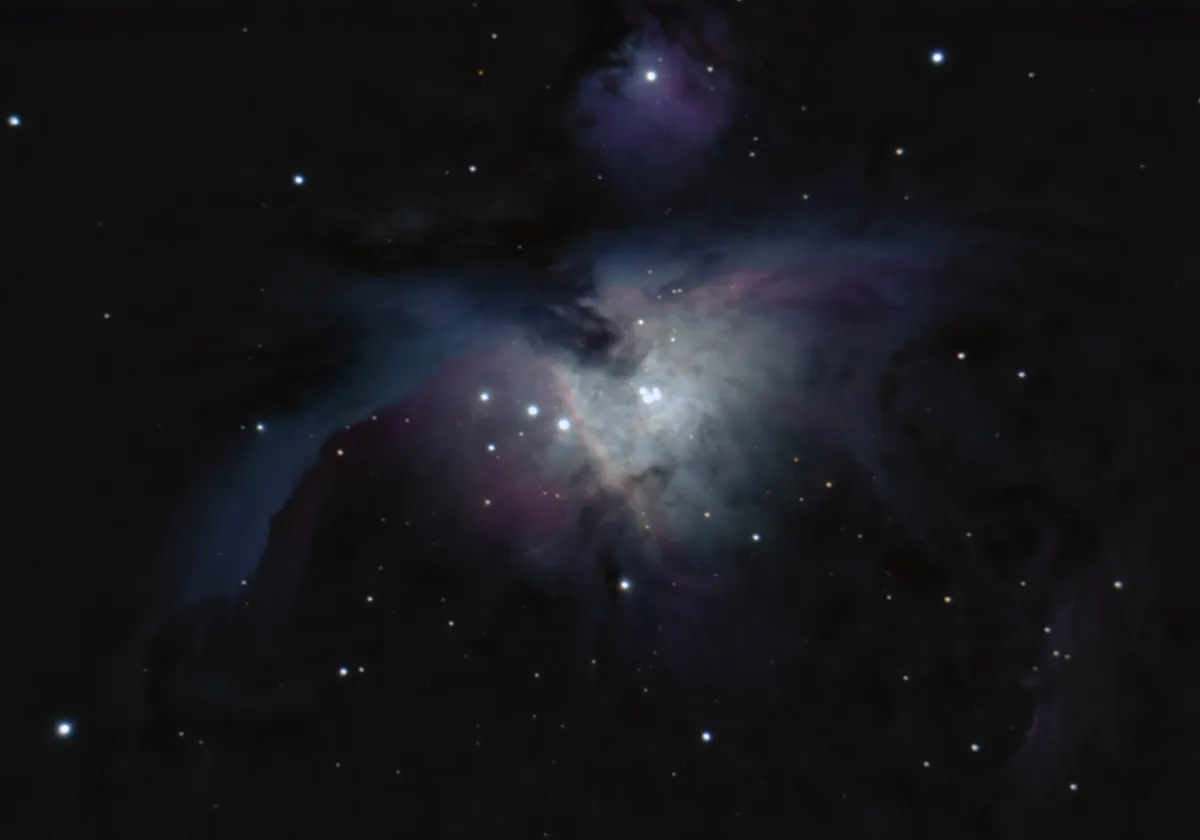
As the stars started to shine they began to emit huge amounts of powerful radiation, which streamed out into the gas and dust around them.
Slowly a vast cavern – whose sweeping walls glowed brightly due to this onslaught of intense ultraviolet radiation – was sculpted into their maternal nebula too.
And that’s what we see when we look at the Trapezium Cluster and the beautiful Orion Nebula around it today
An extraordinary tableau of star formation sketched in ethereal celestial light across the winter sky.
Aldebaran
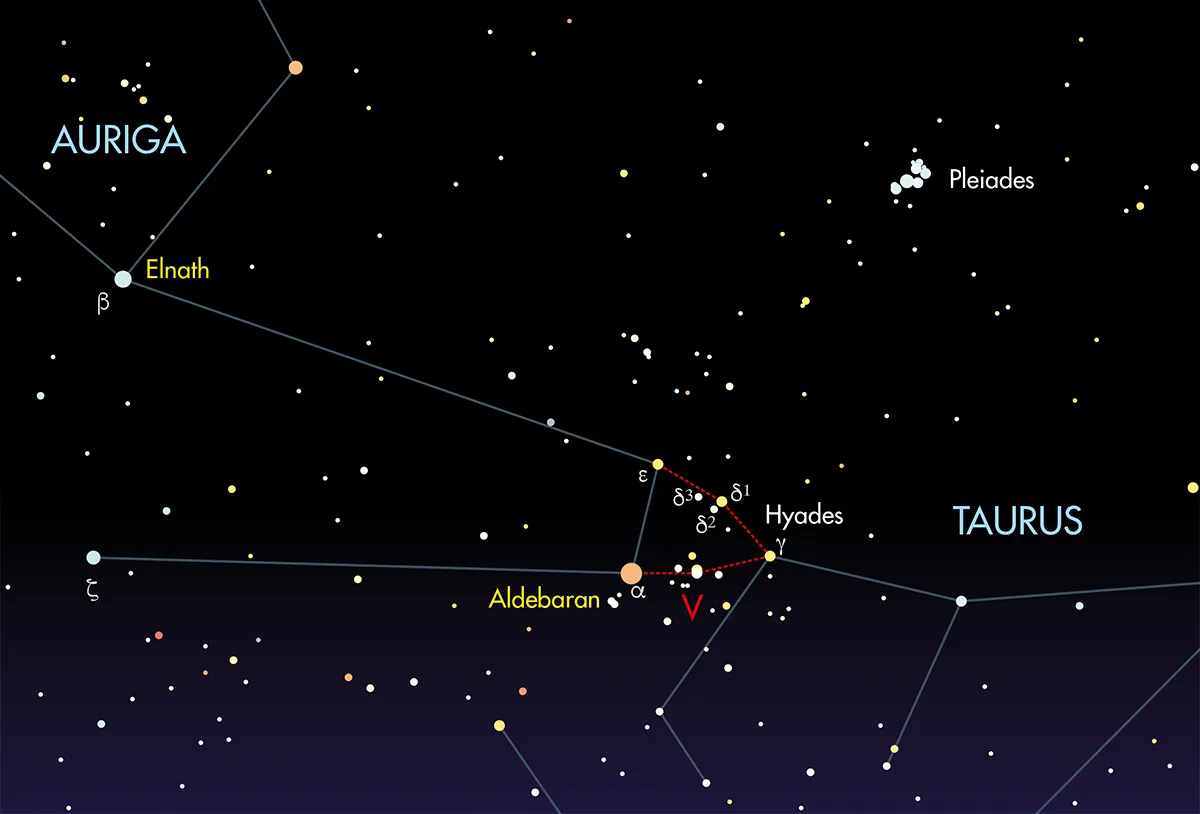
Known as the red eye of the bull Taurus, at the start of January Aldebaran is high in the south at around 21:45 UT.
It's one of the most striking winter stars and a great one to spot on a clear, crisp night.
The V of the Hyades star cluster is a helpful signpost to the star, but if you have trouble finding that use an imaginary line extending northwest from Orion’s Belt to point you in the direction of the stars of Taurus, and thus the Hyades.

Compare Aldebaran (Alpha Tauri) to Betelgeuse and you’d be forgiven for thinking that the two are very similar stars – they’re alike in colour and not very different in brightness.
Both are swollen, ageing stars in fact, but Betelgeuse is much more massive.
Aldebaran is only about 1.3 times the mass of the Sun. This means that Aldebaran’s eventual demise will be very different from Betelgeuse’s.
Instead of creating a supernova it will slowly shed its outer layers to form a beautiful glowing planetary nebula with a white dwarf at its centre.
Sirius

No discussion of the science of the winter stars would be complete without mentioning dazzling Sirius, the alpha star of Canis Major.
There’s no other star that rivals it in the heavens at this time of year, and it’s the brightest star in Earth’s night sky full stop.
Though Sirius may be bright, if you’re new to astronomy finding which one of the dazzling stars in the winter sky it actually is can still be a challenge.
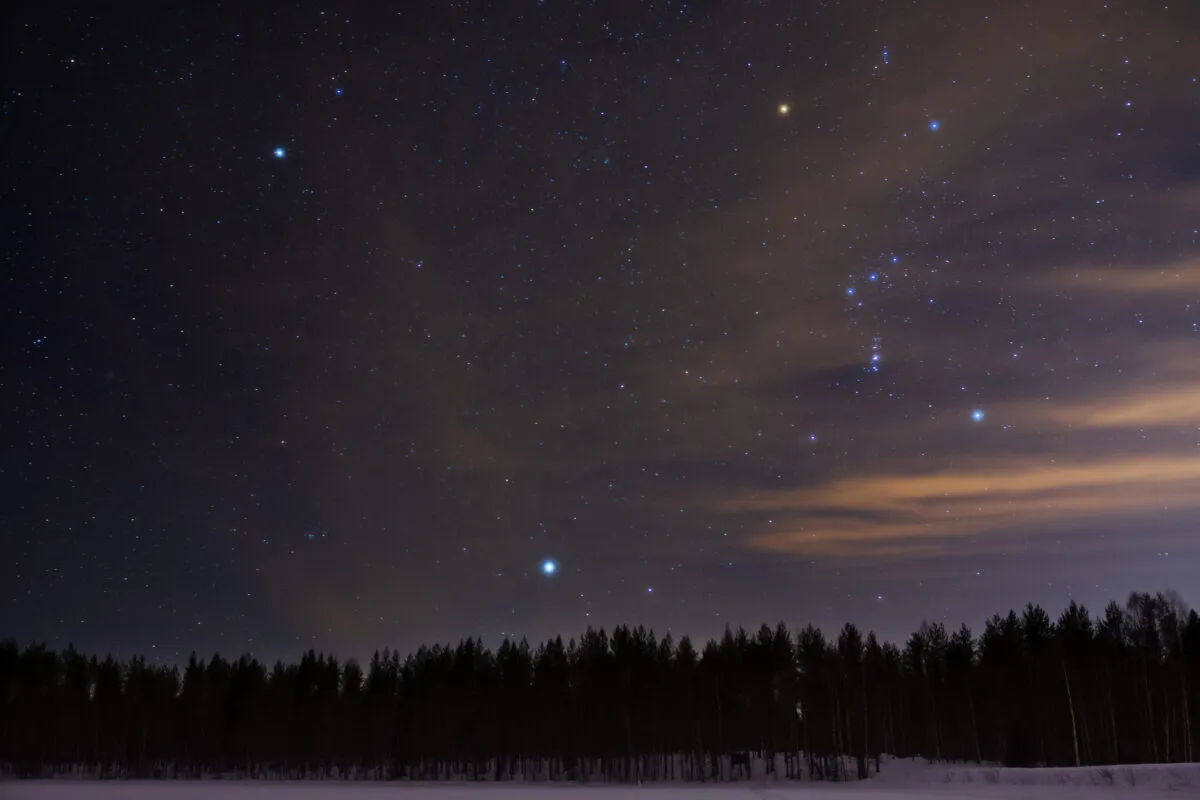
Thankfully there’s a little trick you can use. If you can find the much more recognisable Orion’s Belt, it actually ‘points’ in the direction of Sirius, if you follow the line of the belt down from right to left.
So why does Sirius appear so impressive in our skies?
Well, it’s a relatively bright star in itself but it’s also very close to us too at a distance of 8.6 lightyears.
To put that in perspective, brilliant Rigel in nearby Orion is over 100 times farther away!
The Pleiades
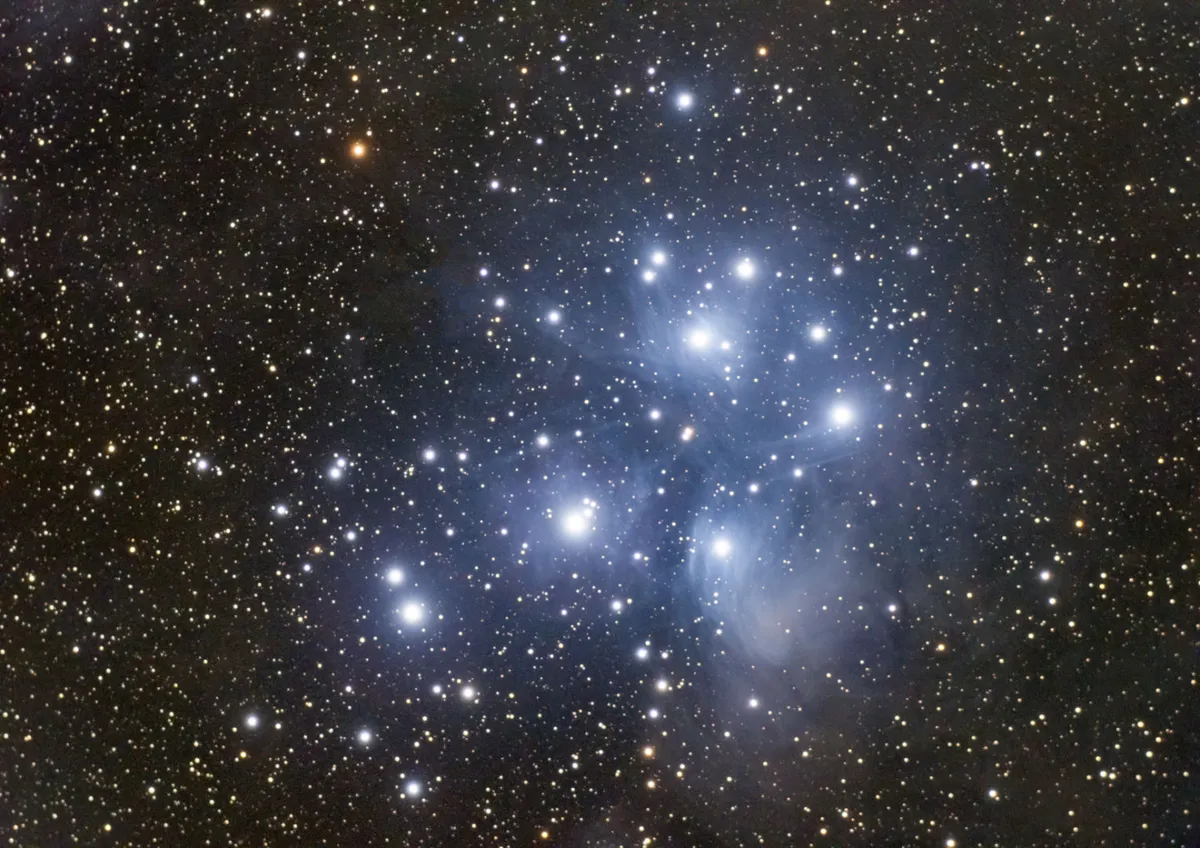
Vicki Pink, Southampton, 6 and 10 December 2021
Equipment: Altair Hypercam 269C, Sky-Watcher Evostar 72ED DS Pro refractor, Sky-Watcher HEQ5 Pro mount
A dazzling collection of winter stars, the Pleiades open star cluster can easily be seen with the naked eye, even from a suburban location.
But observe the Pleiades through binoculars or a telescope and you'll be awe-struck at the bright blue beauty of the cluster.
The Pleiades sit about 14º to the northwest of the bright star Aldebaran.
At the end of January you’ll find the cluster high in the southwest sky around 21:15 UT.
If you can’t spot it with the naked eye try scanning along a line roughly northwest from the Hyades star cluster with a good pair of binoculars.
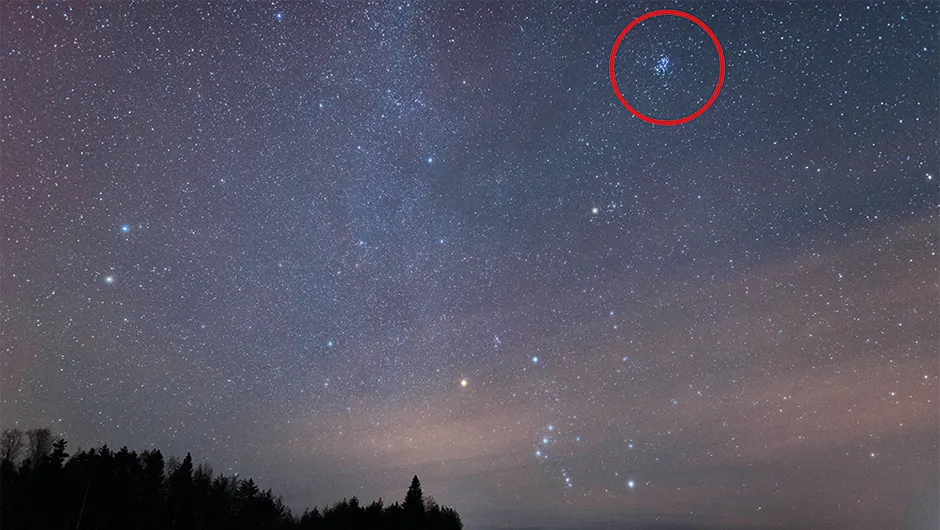
If the Trapezium Cluster in the Orion Nebula is a vision of the birth of stars, then the magnificent Pleiades, or M45, in the constellation of Taurus shows what happens as these glittering collections of stars age and evolve.
After open star clusters emerge from their maternal nebulae they drive away the gas and dust around them before slowly scattering into the surrounding Galaxy.
That’s precisely what we’re seeing when we look at the many members of the Pleiades, which are thought to be 125 million years old.
We’re looking at a grouping of young stars that are no longer swathed in the dense, often glowing, nebulosity associated with their formation.
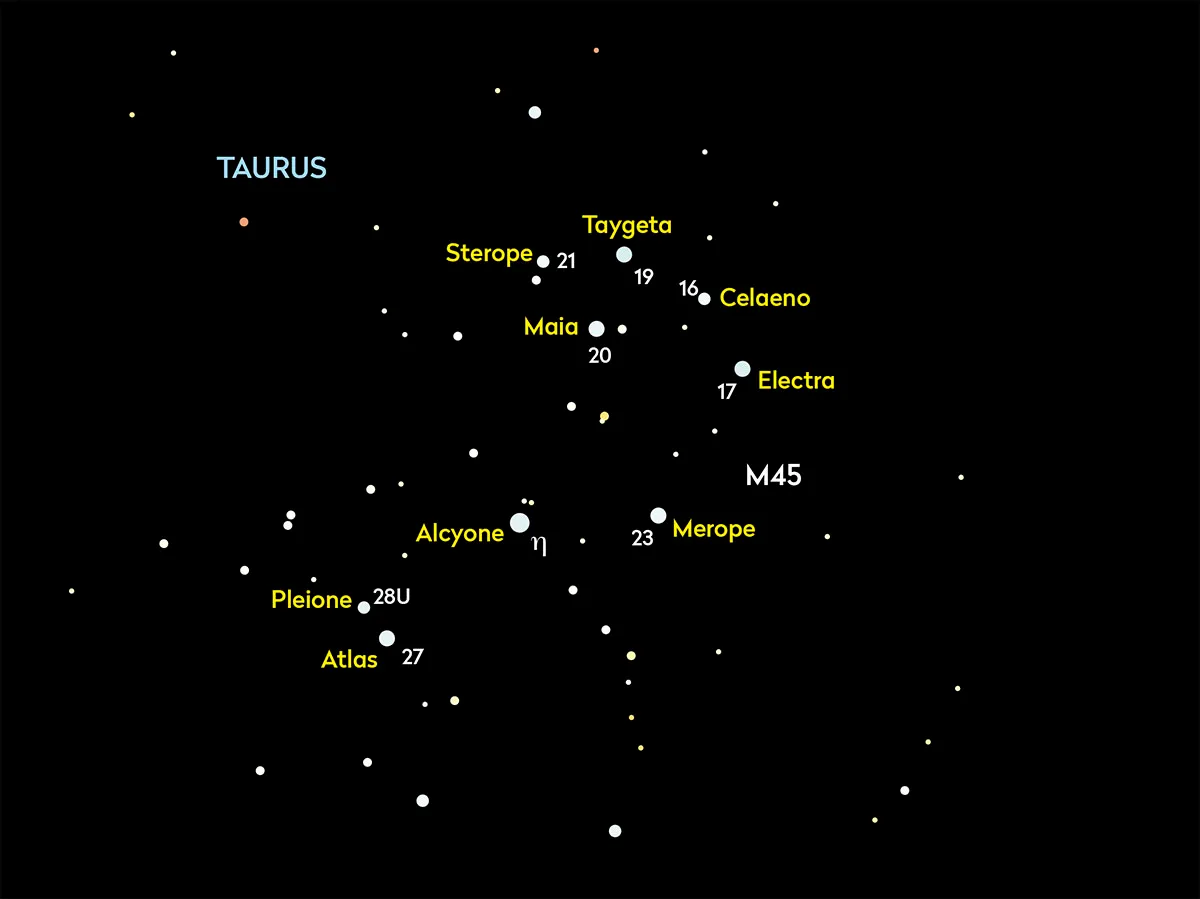
Over time the stars within the Pleiades will likely disperse further.
In fact it’s thought that our very own star, the Sun, may have once belonged to a star cluster like M45.
Astronomers believe they’ve even been able to track down one of the Sun’s siblings, a star within the constellation of Hercules known as HD 162826.
Its composition and orbital history within the Milky Way matches the Sun’s, yet it is now 110 lightyears from us.
What are your favourite winter stars? let us know by emailing contactus@skyatnightmagazine.com

